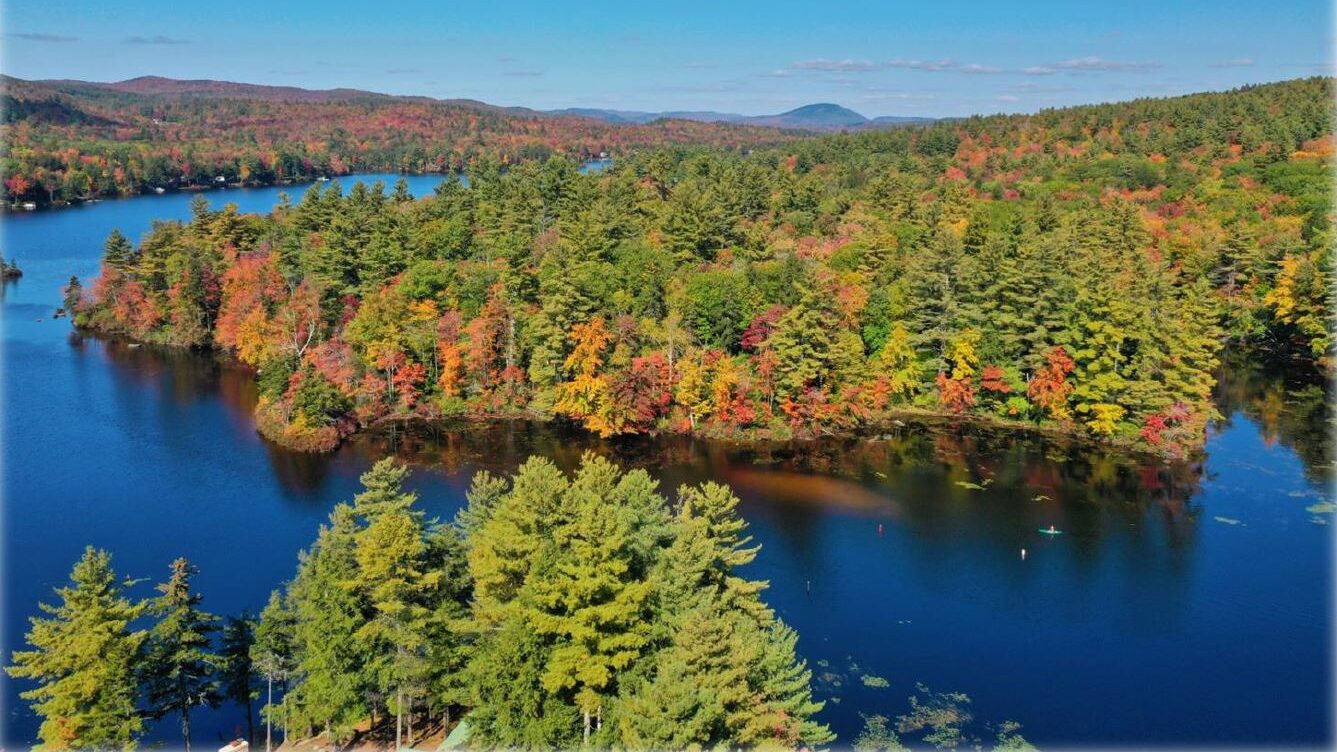
The pristine beauty of New Hampshire’s many lakes is one of the state’s most cherished assets. Unfortunately, these lakes are increasingly being threatened by cyanobacteria blooms, which can have devastating consequences for water quality, property values, and potentially lives. To help protect New Hampshire’s lakes, it is essential to preserve the 40 acres known as The Little Big Forest and not add more septic load to the watershed.
Cyanobacteria, also known as blue-green algae, are a type of bacteria found in freshwater that can produce toxins that can be harmful to humans, pets, and wildlife. These toxins can cause rashes, diarrhea, vomiting, and other health issues. In extreme cases, cyanobacteria blooms can be fatal. Cyanobacteria blooms are often caused by nutrient loading, which is when too many nutrients, particularly phosphorus, enter the water. In New Hampshire, the main sources of phosphorus are fertilizer runoff, wastewater, and septic systems.
The effects of cyanobacteria blooms on New Hampshire’s lakes can be devastating. Not only can they cause health issues for humans and animals, but they can also degrade water quality and reduce recreational opportunities. Cyanobacteria blooms can also have a negative impact on property values and tourism, as people are less likely to visit a lake if they know it is contaminated.
Preserving The Little Big Forest is one of the most effective ways of helping protect New Hampshire’s lakes from the dangers of cyanobacteria blooms. The Little Big Forest is a 40-acre parcel of land located in the Highland Lake watershed, which drains into Island Pond, then the North Branch River which feeds into Franklin Pierce Lake. The forest is home to numerous species of plants, birds, and wildlife and serves as a critical source of clean drinking water for thousands of people.
By preserving The Little Big Forest, we can help protect Highland Lake and Island Pond from further nutrient loading and the potential dangers of cyanobacteria blooms. The forest acts as a filter, trapping and holding nutrients before they enter the lakes and river. By preserving The Little Big Forest, we can help maintain clean drinking water and reduce the risk of cyanobacteria blooms.
In addition to preserving The Little Big Forest, there are a number of other ways to help protect New Hampshire’s lakes from the dangers of cyanobacteria blooms. Homeowners should ensure their septic systems are functioning properly, avoid using fertilizers near water sources, and practice proper lawn care techniques to reduce nutrient runoff. Local governments should also consider implementing Best Management Practices for watershed protection, such as limiting development near water sources and creating buffer zones along rivers and streams to filter out pollutants. The dangers of cyanobacteria blooms in New Hampshire’s lakes are real and should not be taken lightly. By preserving The Little Big Forest and employing other watershed protection measures, we can help protect our lakes and keep them safe for generations to come.

